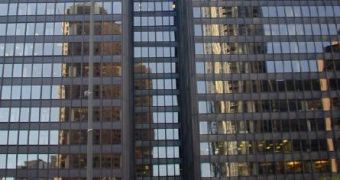American Bird Conservancy (ABC), one of the most active organizations which fights for birds' safety, has joined efforts with the Bird-safe Glass Foundation, in order to obtain the LEED green building certification for their innovative project.
The two organizations work in partnership to come up with new ideas, applied to commercial buildings, that will decrease the risk of bird collisions.
This strategy pleases all the other non-profit organizations and animal protection groups, since this phenomenon ranks first in a list of most frequent causes of bird mortality.
Only across the United States, building collisions generate the death of one billion birds, every year.
Now officials are trying to implement their new strategy, benefiting from the help of architects, developers and designers. During the day, the birds aren't able to distinguish windows and glass surfaces while they are flying.
During the night time, they are attracted by lights and distracted from their previous itinerary.
Architects all across the US will have the chance to contribute to this feature, which will most likely be able to increase the safety of birds, while making the new buildings truly eco-conscious.
New features will imply improving the glass surfaces with “visual noise” which will be detected by birds, allowing them to avoid a fatal impact. Such an action will be performed while changing the present reflectivity, color (including UV), material quality, or opacity.
This initiative, once implemented, will represent a major achievement for LEED Technical Development, USGBC, as well.
“Incorporating design strategies that reduce the impact our built environment has on wildlife is a logical extension of the philosophy upon which we've built the LEED rating system for the past decade. The LEED Pilot Credit Library allows us to expand the range of issues LEED addresses while staying true to our mission,” declared Brendan Owens, vice president, LEED Technical Development, USGBC.
The main goal is to obtain a superior product, noticeable to birds, but not to people.
It is almost an honor to be a part of the network of LEED-certified buildings. Such facilities come with a long list of advantages. First of all, they preserve energy while saving money.
Second, they reduce the CO2 footprint while improving the air quality. Now the challenge remains to implement the new bird-friendly features.

 14 DAY TRIAL //
14 DAY TRIAL //